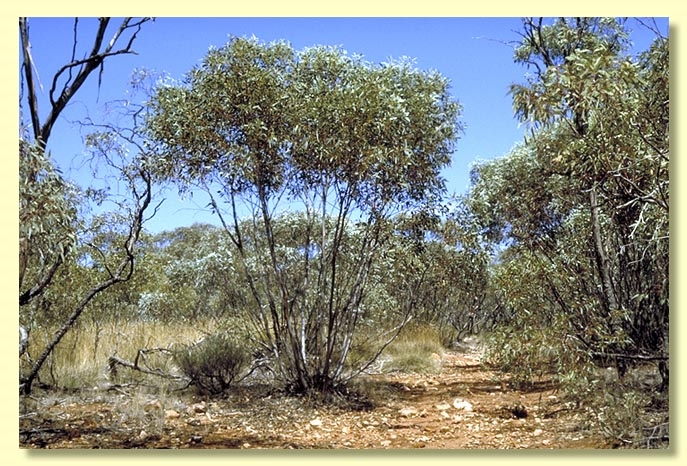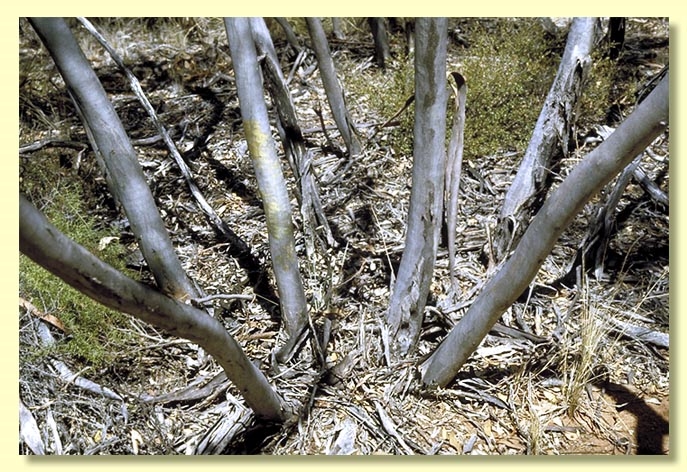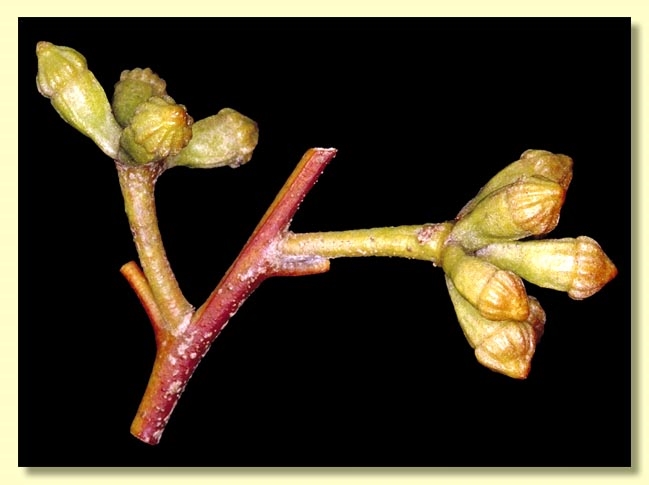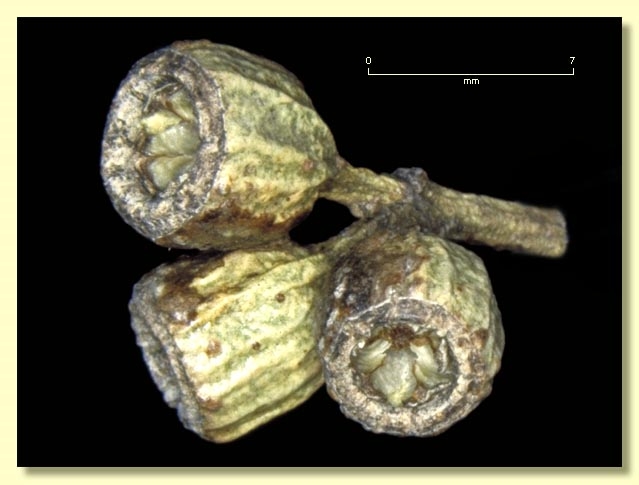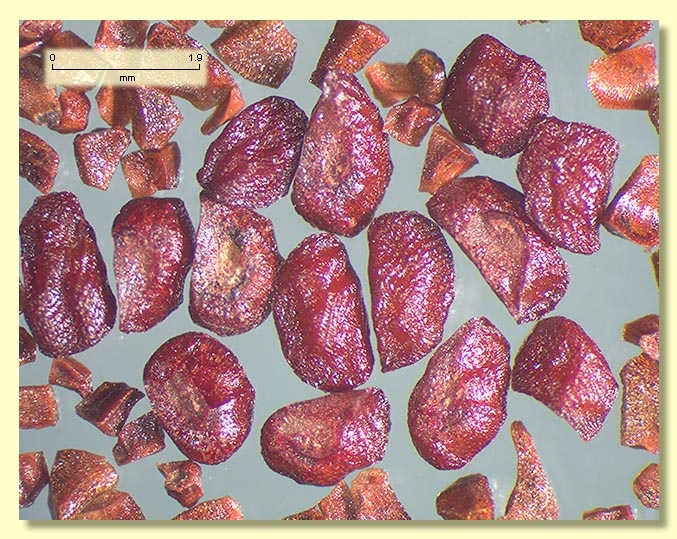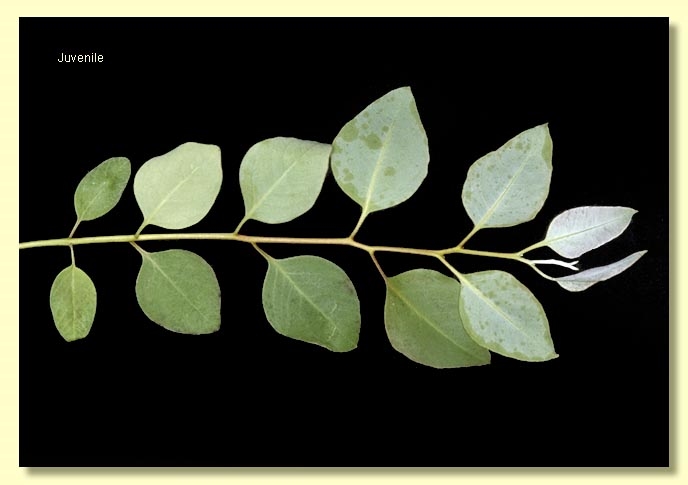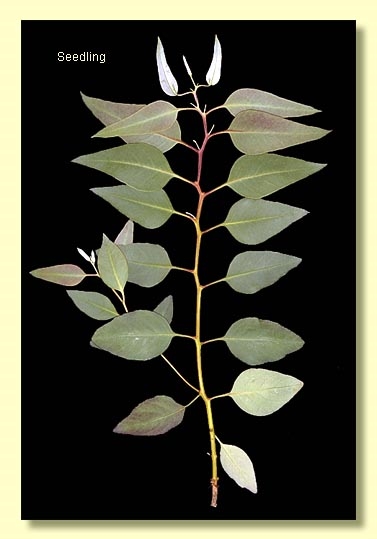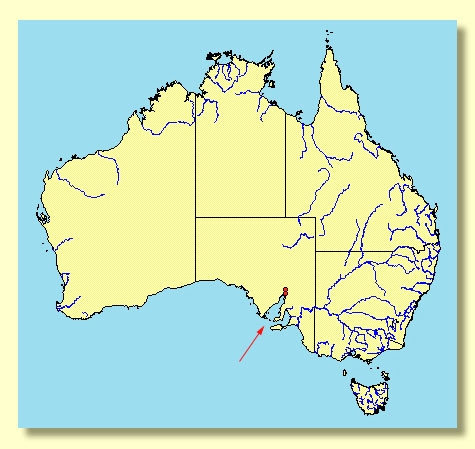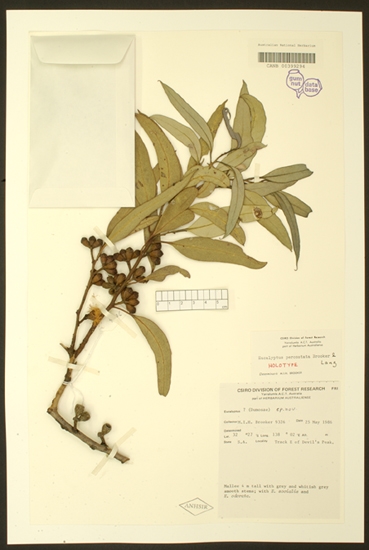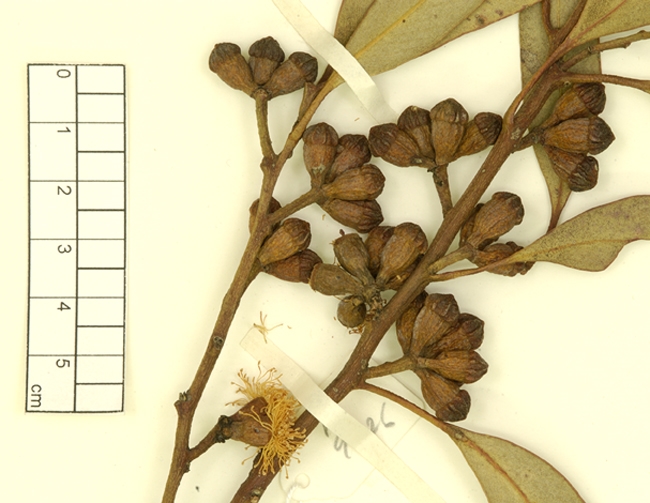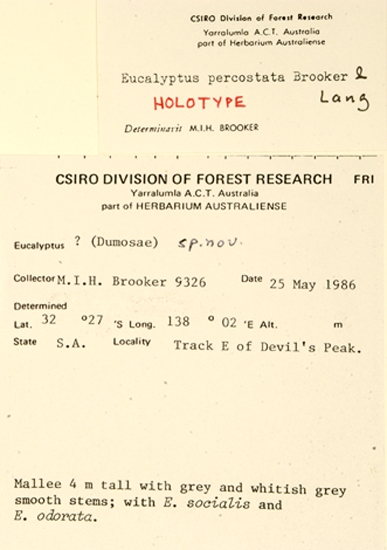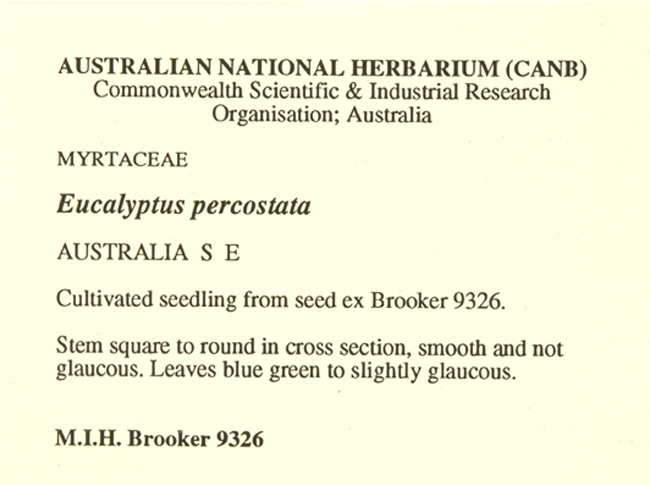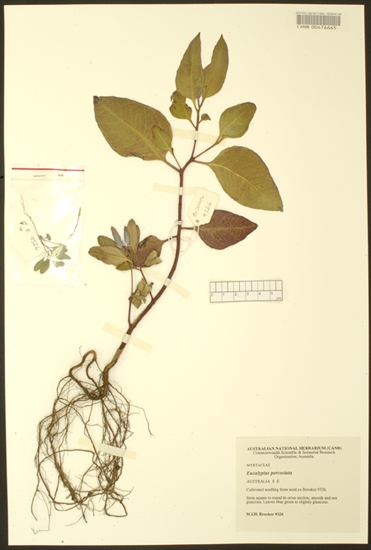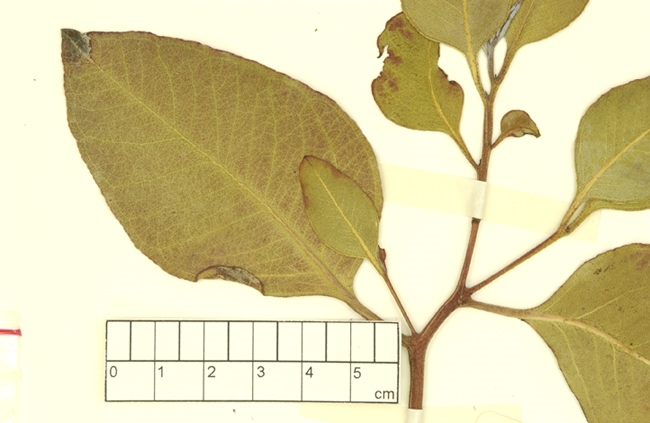Euclid - Online edition
Eucalyptus percostata
Eucalyptus | Symphyomyrtus | Dumaria | Rufispermae
Bark smooth, white, grey or coppery.
Branchlets have oil glands in the pith.
Juvenile growth (coppice or field seedlings to 50 cm): stems square in cross-section, smooth or slightly warty; juvenile leaves always petiolate, opposite until node 3 to 5, broadly ovate to broadly lanceolate, 5–10 cm long, 3–6 cm wide, base tapering to petiole or rounded, dull and green above; growing tip conspicuously waxy but this is soon lost as leaves expand.
Adult leaves alternate, petiole 1–2.2 cm long; blade lanceolate, 7–12 cm long, 1.2–2.5 cm wide, base tapering to petiole, concolorous, dull, green to blue-grey, rarely glaucous, side-veins greater than 45° to midrib, densely reticulate with erose veinlets, intramarginal vein parallel to and just within margin, oil glands mostly intersectional or obscure.
Inflorescence axillary unbranched, peduncles 0.8–2 cm long, buds 7, shortly pedicellate, rarely sessile, pedicels (0)0.1–0.2 cm long. Mature buds pyriform (0.8–1.2 cm long, 0.6–0.7 cm wide), non-glaucous, slightly ribbed longitudinally on hypanthium, scar present, operculum rounded to conical (0.4–0.6 cm long), wider than hypanthium and conspicuously ribbed, stamens inflexed, anthers cuboid to wedge-shaped, versatile, dorsifixed, dehiscing by longitudinal slits (non-confluent), style long, stigma tapered, locules 3 to 5, the placentae each with 4 vertical ovule rows. Flowers white.
Fruit usually shortly pedicellate, pedicels (0)0.1–0.3 cm long, cup-shaped to obconical, 0.6–0.8 cm long, 0.5–0.9 cm wide, usually slightly ribbed longitudinally, disc descending, valves 3 to 5, near rim level.
Seeds reddish brown and glossy, 1.5–2.3 mm long, depressed-ovoid, dorsal surface shallowly pitted, hilum ventral.
Cultivated seedlings (measured at ca node 10): cotyledons reniform; stems square in cross-section; leaves always petiolate, opposite for 3 to 5 nodes then alternate, ovate, 5–8.5 cm long, 3–5.5 cm wide, base rounded to tapering, dull, green to bluish green sometimes with slight waxy bloom.
Flowering has been recorded in September and November.
A mallee endemic to South Australia and known from only a few localities in the southern Flinders Range, viz. Telowie Gorge, Alligator Gorge and east of Devils Peak. Eucalyptus percostata occurs on hills and slopes on loamy soils It has slender, smooth-barked stems, dull green to greyish leaves and is non-glaucous.
In the classification of Brooker (2000) Eucalyptus percostata belongs in Eucalyptus subgenus Symphyomyrtus section Dumaria having these features: buds initially with two opercula the outer shed early, stamens strongly inflexed, ovules in 4 rows on the placentae and cotyledons reniform. Within section Dumaria the species belongs to a large sub-group of closely related species (series Rufispermae, 37 described species and subspecies) diagnosed by glandular pith in the branchlets, anthers cuboid to wedge-shaped, versatile, and by the reddish brown and glossy, flattish seeds which are unique to the series.
In its natural distribution E. percostata has coarser, more ribbed buds and fruit than the widespread mallee E. dumosa. Immediately to the west of the distribution of E. percostata, on the Eyre Peninsula, there are four closely related species: E. calcareana, E. pileata and E. phenax subsp. phenax, which are smooth-barked small trees or mallees with glossy green leaves; and E. cretata, which is strongly glaucous on branchlets, leaves and buds. To the east of the natural occurrence of E. percostata in the area loosely defined as the Murray Mallee another related species, E. cyanophylla, is found between Renmark (South Australia) and Morkalla to Murrayville (Victoria). It occurs on flattish sandy sites and has much greyer appearance with coarser leaves than E. percostata.
At Devils Peak E. percostata hybridizes with the mallee-box E. odorata producing smooth-barked mallees that have informally been called E. desquamata, this name never having been published.

